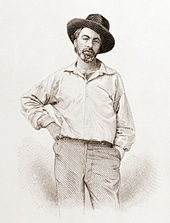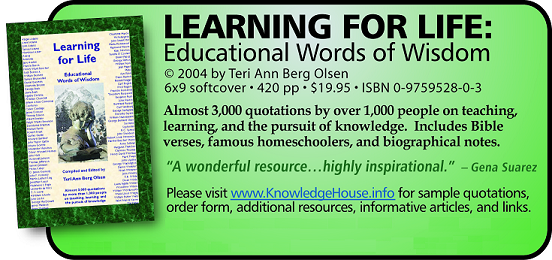

Walt Whitman
 “Whitman’s writings are treasured for capturing the nation’s spirit during the nineteenth century and examining some of the era’s most significant events including westward expansion, immigration, slavery, and the Civil War.” ~Walt Whitman Birthplace Association Walt Whitman is recognized as one of the great American poets. He was born on May 31, 1819, in the West Hills of Long Island, New York. His mother, Louisa Van Velsor, was a Quaker of Dutch and Welsh descent. Walt remained close to his mother throughout his life and attributed his creativity to her influence, saying “How much I owe her!” His father, Walter, came from English lineage; a free-thinker who rejected organized religion, he was a patriotic American and friend of Tom Paine, the author of Common Sense. One of Walt’s fondest early memories was at an Independence Day celebration when he was picked up and carried by General Lafayette, the Revolutionary War hero. Walt Whitman was thus one of the first generation of Americans who were born in the newly formed United States. The second oldest of nine children, he grew up in Brooklyn where his father, a carpenter, built and sold houses. Walt attended a public school for six years with students of various ages and backgrounds, most of whom were poor, since children from wealthy families were sent to private schools. “But most of Whitman's meaningful education came outside of school when he visited museums, went to libraries, and attended lectures. He always recalled the first great lecture he heard, when he was ten years old, given by the radical Quaker leader Elias Hicks.” [1] Times were tough financially, and the elder Whitman suffered many losses in real estate speculation. Young Walt was withdrawn from school at the age of eleven to help support the family. Although that was the end of his formal schooling, his self-education continued. Whitman went to work as an office boy at the law offices of James B. Clarke and his son, Edward. The younger Clarke helped Walt with his handwriting and composition, and introduced Walt to the local lending library. This marked the beginning of Whitman’s lifelong love of literature. He read voraciously and became acquainted with the works of Homer, Dante, Shakespeare, Sir Walter Scott, and James Fenimore Cooper. According to a biographical essay by Ed Folsom and Kenneth M. Price: “Always an autodidact, Whitman absorbed an eclectic but wide-ranging education through his visits to museums, his nonstop reading, and his penchant for engaging everyone he met in conversation and debate. While most other major writers of his time enjoyed highly structured, classical educations at private institutions, Whitman forged his own rough and informal curriculum of literature, theater, history, geography, music, and archeology out of the developing public resources of America’s fastest growing city.” [2] Walt began to learn the printer's trade at the age of twelve. He started out as an apprentice for The Patriot, the weekly Long Island newspaper. Over the next five years he worked at several different newspapers. At age 15, his first article was published. Whitman was a regular patron of the local library, joined a debating society, attended plays and operas, and anonymously published some of his earliest poetry. At age 16 he attempted to find further work but had difficulty doing so, partly due to a severe fire in the printing and publishing district which put many printers out of business, and also due to a general collapse in the economy leading up to the Panic of 1837. In May of 1836 Walt rejoined his family, now living in Hempstead, Long Island. At the age of 17, he began teaching in the one-room school houses of Long Island. Whitman was an innovative young teacher – he permitted his students to call him by his first name, he eschewed corporal punishment, and he devised learning games for them in arithmetic and spelling. Whitman taught intermittently at various schools until the spring of 1838, when he decided to found his own newspaper. Whitman served as publisher, editor, pressman, and distributor of The Long Islander in Huntington, New York, and even provided home delivery. Ten months later, he sold the publication. Although he didn’t really like being a teacher, Whitman made another attempt at teaching from the Winter of 1840 to the Spring of 1841. During this time, he published a series of ten editorials called “Sun-Down Papers – From the Desk of a Schoolmaster” in three newspapers. In these essays, he adopted a constructed persona – writing not as himself but pretending to be someone else – a literary technique that he would utilize throughout his writing career. Whitman also wrote freelance fiction and poetry throughout the 1840s. In the Summer of 1841, Whitman turned to journalism as a full-time career and worked as an editor for various newspapers. He also traveled to New Orleans via a roundabout route, which prompted his interest in the diversity of American places. While in New Orleans, he became fascinated with the French language; as a result, many of his poems contain words of French derivation. But it was also in New Orleans that he experienced first hand the viciousness of the slave market. On his return to Brooklyn in the Fall of 1848, Whitman founded a “free soil” newspaper, The Brooklyn Freeman. Whitman was also a delegate to the 1848 founding convention of the Free Soil Party. This was a short-lived single-issue political party. Its main purpose was opposing the expansion of slavery into the western territories, arguing that free men on free soil comprised a morally and economically superior system to slavery. They also worked to remove existing laws in states that discriminated against freed African Americans. Between 1848 and 1855, Whitman set out to write a distinctly American epic using free verse with a cadence based on the Bible. Self-publishing the first edition of his poetry collection Leaves of Grass, he personally assisted with the typesetting at a local print shop. Whitman sent a copy to Ralph Waldo Emerson, the famous essayist, lecturer, and poet who led the American Transcendentalist movement of the mid-19th century. Emerson responded positively with a letter saying, “Dear Sir, I am not blind to the worth of the wonderful gift of "Leaves of Grass." I find it the most extraordinary piece of wit and wisdom that America has yet contributed.... I rubbed my eyes a little to see if this sunbeam were no illusion; but the solid sense of the book is a sober certainty. It has the best merits, namely, of fortifying and encouraging.” Henry David Thoreau and Bronson Alcott, two other well-known writers at the time, also admired Whitman’s work. However, Leaves of Grass was a controversial book and few people appreciated Whitman’s poetic style. Many thought his poems were unfit to be read because they were not “refined” or “lofty” enough. Touching on subjects never tackled by poets before, he wrote about runaway slaves, the miracles of everyday life, his respect for the common working man, the impact of urbanization on the masses, and of his own dreams and travels. He wrote about the diversity of humanity – all the different kinds of people in the world. He wrote about the diversity of the landscape – the sea and the sky, plants and animals, the city and the country. His poetry was earthy, with unusual images and symbols such as leaves, grass, and debris. His book was criticized by some for the seemingly “trashy” and “obscene” nature of the subject matter. Whitman broke the boundaries of poetic form and forever changed the concept of what a poem could be. Before Whitman, a poem had to have a regular pattern of meter and rhyme. Whitman’s poems were not usually structured in this way, and his words moved from line to line more like prose. But Whitman’s poetry was flowing and full of energy. He liked to recite poetry aloud, and you can almost hear the rhythm of speech coming from the page: “Great is Language – it is the mightiest of the sciences, It is the fulness, color, form, diversity of the earth, and of men and women, and of all qualities and processes; It is greater than wealth – it is greater than buildings, ships, religions, paintings, music.” Interestingly, it was music that seemed to be one of Whitman’s major sources of inspiration. Many of his poems contain musical terms, names of instruments, and names of composers. Whitman’s poetry is very personal, particularly in his “Song of Myself,” but he also identifies with people everywhere through his desire to unite all of humanity in the bonds of friendship. Whitman has become known as the poet of democracy because he stated in his poems that all men are brothers and must work together. He denied that any one person is more important than another, and embraced all people equally. In “Song of Myself,” he gave an inventory of major religions and indicated that he respected and accepted all of them. Whitman revised and added to Leaves of Grass many times, and nine other editions were printed in his lifetime. Although Leaves of Grass never became part of any literary establishment and it seemed strange to most of the poet’s contemporaries, today it is considered a literary masterpiece. Whitman wrote other poems in addition to those in Leaves of Grass. At the beginning of the American Civil War, he published a traditional style poem called “Beat! Beat! Drums!” as a patriotic rally call for the North. Walt's brother George joined the Union Army and sent Whitman vividly detailed letters from the battlefront. After the Battle of Fredericksburg, Walt went searching for George among the field hospitals in Virginia, thinking that his brother may have been wounded. Profoundly affected by seeing the injured soldiers and their amputated limbs, Whitman never returned to New York but instead volunteered as a nurse in the army hospitals. Whitman wrote about his war experiences in “The Great Army of the Sick,” published in a New York newspaper in 1863 and in a book called Memoranda During the War, published in 1875. After the war, Whitman continued working for the federal government as an office clerk in Washington, D.C. Whitman also wrote many poems about the Civil War and about Abraham Lincoln, whom Whitman greatly admired. Two of his most famous poems, “O Captain! My Captain!” and “When Lilacs Last in the Dooryard Bloomed,” were written to mourn the passing of Lincoln after his assassination. Whitman had the ability to write in a singularly American character, and today he is considered one of the few truly great American men of letters. Modernist poet Ezra Pound called Whitman “America’s poet... He is America.” Literary critic Harold Bloom wrote in the introduction for the 150th anniversary of Leaves of Grass: “You can nominate a fair number of literary works as candidates for the secular Scripture of the United States. They might include Melville's Moby-Dick, Twain's Adventures of Huckleberry Finn, and Emerson's two series of Essays and The Conduct of Life. None of those, not even Emerson's, are as central as the first edition of Leaves of Grass.” I Hear America Singing, by Walt Whitman
I hear America singing, the varied carols I hear, References:
Poetry for Young People: Walt Whitman http://www.whitmanarchive.org - The Walt Whitman Archive is a comprehensive online resource about Whitman's life and work. http://waltwhitman.org - Walt Whitman Birthplace State Historic Site and Interpretive Center http://www.waltwhitman.org/about/about-whitman - Walt Whitman biography. http://micklestreet.rutgers.edu/Scholarship/essays/Stacy.pdf - Walt Whitman and Ethical Aesthetics in “The Sun-Down Papers,” by Jason Stacy.
Contact: . Thanks! Please click here for reprint permission.


These pages are a continuous work in progress.
|
Help Support this Site
and purchase items via our affiliate links. Thank you!
 
Thank you for visiting my |

